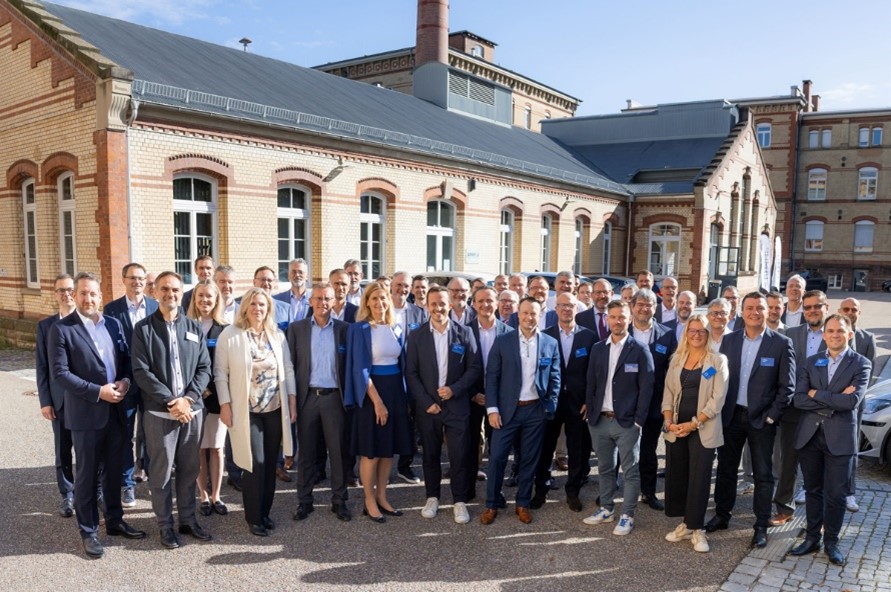Leveraging IP Benchmarks for Sustainable Growth: CTO-Forum at MHP Porsche
On September 12th, the CTO Autumn Forum took place at MHP Porsche with a lot of industry participation. Over 50 board members responsible for technology came to Ludwigsburg at the invitation of the Rudolf Diesel Medal Board of Trustees. Dr. Dominique Christ and Prof. Dr. Alexander Wurzer presented the latest initiative of the Industry Council Competition: IP Benchmarking.
In today’s rapidly evolving business landscape, intellectual property (IP) has become an increasingly important strategic asset and source of competitive insights. As patent filings grow across industries and patent litigations rise, companies must reframe their view on IP and how to maximize these valuable assets. This blog post explores the critical role of IP benchmarking in enabling sustainable growth and unlocking the full potential of intellectual property.
 What is IP Benchmarking?
What is IP Benchmarking?
IP benchmarking is the process of comparing an organization’s intellectual property practices, performance, and metrics against those of other companies or industry standards. This systematic evaluation allows businesses to identify areas for improvement, uncover best practices, and gain valuable insights into their competitive position within the IP landscape.
Types of IP Benchmarking
There are several approaches to IP benchmarking, each offering unique perspectives and insights:
- Technology Growth Benchmarking
One effective method is to create a heatmap that identifies investment areas of competitors across various technology domains. This visual representation allows companies to quickly assess where their rivals are focusing their R&D efforts and patent filings. By analyzing these patterns, organizations can make informed decisions about their own technology investments and IP strategy.
- Spend Effectiveness Benchmarking
This approach quantifies the outputs of certain business processes, such as the number of first patent filings per million euros of R&D spending. By comparing these metrics against other players in the industry, companies can gauge their efficiency in converting research investments into valuable IP assets. Root cause analysis can then be performed to understand and address any deviations from industry norms.
- Process Cost Benchmarking
Internal process cost comparison allows organizations to evaluate the resources allocated to various IP-related tasks, such as invention disclosure processing, patent drafting, and office action responses. By benchmarking these costs against industry medians, companies can identify opportunities for optimization and cost reduction in their IP management processes.
- Organizational and KPI Benchmarking
This type of benchmarking focuses on comparing organizational structures, processes, and key performance indicators (KPIs) related to IP management. Examples include metrics such as the number of invention disclosures received per year, the ratio of patents filed to disclosures received, and the number of inventions per R&D spending. These comparisons can highlight areas where a company excels or lags behind its peers, informing strategic decisions and process improvements.
Advantages of IP Benchmarking
Implementing a robust IP benchmarking program offers numerous benefits for organizations:
1 . Improved Decision-Making:
By providing data-driven insights into industry trends and competitive landscapes, IP benchmarking enables more informed strategic decisions regarding technology investments and IP portfolio management.
2 . Increased Efficiency:
Comparing internal processes and costs to industry standards helps identify inefficiencies and opportunities for streamlining IP-related activities.
3 . Enhanced Innovation:
Benchmarking can reveal gaps in a company’s technology coverage, spurring targeted R&D efforts and potentially leading to breakthrough innovations.
4 . Optimized Resource Allocation:
Understanding how peers allocate resources to various IP activities allows organizations to optimize their own staffing and budget decisions.
5 . Competitive Advantage:
Regular benchmarking helps companies stay ahead of industry trends and maintain a strong competitive position in their respective markets.
6 . Value Maximization:
By identifying underutilized assets and missed opportunities, benchmarking can help organizations unlock the full value of their IP portfolios.
Integrating IP into R&D Processes
One key insight from IP benchmarking is the importance of integrating IP considerations into existing R&D processes. Many companies apply well-structured R&D processes with stage gates for checks at the end of each phase. By incorporating invention and patent-related aspects into these standard processes, organizations can ensure that IP becomes a natural and mandatory element of their innovation workflow. This integration can include activities such as: Preliminary discussions with inventors, pre-analysis of patentability, quick prior art searches or assistance in enhancing and completing invention descriptions. By making IP a core part of the R&D process, companies can increase the likelihood of identifying and protecting valuable innovations, ultimately strengthening their competitive position.
As intellectual property continues to grow in importance as a strategic asset, companies that leverage IP benchmarking will be better positioned to drive sustainable growth and maintain a competitive edge. By systematically comparing their IP practices, performance, and metrics against industry standards and competitors, organizations can uncover valuable insights, optimize their processes, and maximize the value of their intellectual property portfolios.
Implementing a comprehensive IP benchmarking program requires commitment and resources, but the potential benefits in terms of improved decision-making, increased efficiency, and enhanced innovation make it a worthwhile investment for forward-thinking companies across all industries.
Here is the IP benchmark presentation by Dr. Dominique Christ at the CTO Autumn Forum in Ludwigsburg at MHP Porsche.
About the Author
 Dr. Dominique Christ is the Managing Director of Dennemeyer Consulting GmbH, where he is responsible for the strategic direction and management of Dennemeyer’s global consulting services. With a background in law and business, Dr. Christ brings a unique perspective to the field of intellectual property management. Prior to joining Dennemeyer, Dr. Christ worked as a senior management consultant at McKinsey & Company, advising national and international clients on digital transformations and innovation in various sectors. His international experience includes living and working in Canada, Chile, and South Africa. Dr. Christ holds a Ph.D. in Law, focusing on company and capital markets law, as well as an MBA from the University of Dayton. He is fluent in English, German, and Spanish and has been active in the IP field since 2019. His areas of expertise include chemistry and engineering.
Dr. Dominique Christ is the Managing Director of Dennemeyer Consulting GmbH, where he is responsible for the strategic direction and management of Dennemeyer’s global consulting services. With a background in law and business, Dr. Christ brings a unique perspective to the field of intellectual property management. Prior to joining Dennemeyer, Dr. Christ worked as a senior management consultant at McKinsey & Company, advising national and international clients on digital transformations and innovation in various sectors. His international experience includes living and working in Canada, Chile, and South Africa. Dr. Christ holds a Ph.D. in Law, focusing on company and capital markets law, as well as an MBA from the University of Dayton. He is fluent in English, German, and Spanish and has been active in the IP field since 2019. His areas of expertise include chemistry and engineering.
He serves as Chairman of the IP Strategy Committee for the International Institute for IP Management. As a thought leader in the IP industry, Dr. Christ is committed to helping organizations leverage their intellectual property assets to drive growth and maintain a competitive edge in today’s rapidly evolving business landscape.



